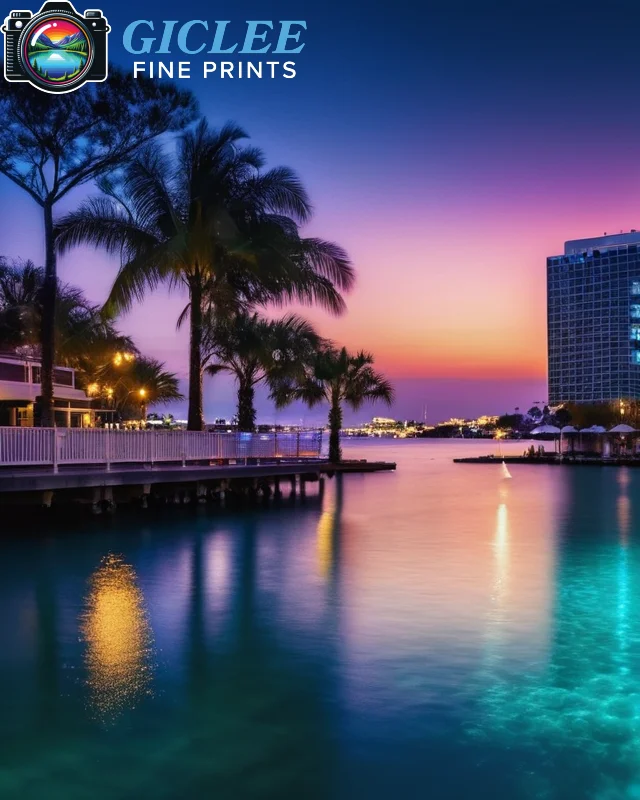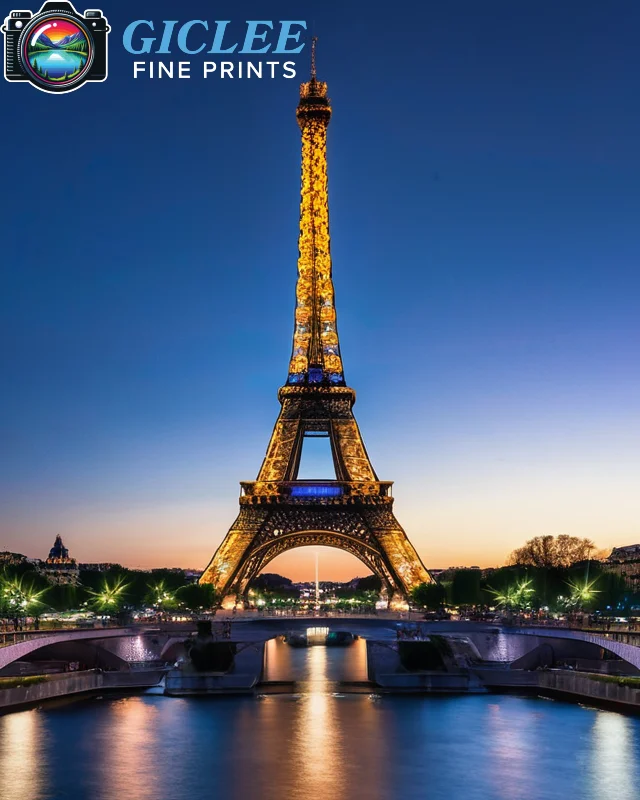
Deciding whether to use borders or add margins for prints can significantly impact the final appearance, framing options, and appeal of your artwork. Borders and margins serve various functions, from enhancing visual presentation to providing space for signatures or framing ease. At Giclee Fine Prints, we guide artists and photographers on how to use borders and margins to elevate their prints.
Understanding the Difference: Borders vs. Margins
Before diving into the benefits of borders and margins, it’s essential to understand their distinctions:
- Borders: A visible edge around the artwork, often in white or black, serving as an aesthetic frame. Borders can enhance the print’s visual appeal, adding a polished, finished look.
- Margins: Extra space around the artwork, usually left unprinted. Margins are functional, helping with framing and preventing image loss along the edges, but may not be visible when the artwork is framed.
Best For:
- Borders for adding stylistic elements and enhancing display without framing.
- Margins for practical purposes, like protecting edges and facilitating framing.
Visual Appeal of Borders
Adding borders to prints creates a visual frame that can highlight the artwork, add balance, and enhance its presentation. Borders act as a built-in mat, making the print look polished even without a frame.
Key Benefits:
- Enhanced Focus: Borders draw attention to the artwork, making it the central focal point.
- Creates Contrast: Borders add contrast, especially for artworks with vivid colors or dark tones. White borders, for example, offer a clean look that enhances the artwork’s colors.
- Completes the Artwork: Borders can add a sense of completion, giving the artwork a finished, gallery-ready feel.
Best For:
- Artists and photographers looking to enhance the visual appeal and create a standalone presentation.
Practical Benefits of Adding Margins
Margins offer a functional approach, adding unprinted space around the artwork that assists with framing and handling. Margins are especially helpful for preserving the integrity of the artwork during framing.
Key Benefits:
- Easier Framing: Margins provide extra space for matting and framing without cropping or covering any part of the artwork.
- Protection During Handling: Margins prevent fingerprints and smudges on the artwork, as they provide space to handle the print without touching the printed area.
- Avoids Image Loss: Margins keep important details visible by preventing any part of the artwork from being hidden under the frame.
Best For:
- Professional prints intended for framing, where preserving the full composition of the artwork is crucial.

Deciding on Border Thickness
The thickness of a border or margin can significantly affect the appearance of the print. Standard border thickness varies depending on print size and personal preference.
Key Tips:
- Thin Borders (0.5 to 1 inch): Ideal for smaller prints, thin borders create a subtle frame without overpowering the artwork.
- Medium Borders (1 to 2 inches): Suitable for medium-sized prints, medium borders balance the print’s composition while providing adequate framing space.
- Thick Borders (2+ inches): Ideal for large-format or statement pieces, thick borders add visual weight and give a modern, gallery-like presentation.
Best For:
- Artists and photographers adjusting the border thickness to match the size and style of their artwork.
Choosing Colors for Borders
While white borders are most common, other colors can enhance or complement the artwork, making the piece stand out or blend with the surrounding decor.
Key Tips:
- White Borders: Classic and versatile, white borders are popular for most artwork as they don’t detract from the colors in the print.
- Black Borders: Black borders can add a sleek, modern touch, especially for monochrome or dark-toned artwork. They create a strong contrast that frames the image powerfully.
- Colored Borders: Custom colors can complement or match elements within the artwork, adding a unique, cohesive look.
Best For:
- Artists wanting to experiment with border colors to enhance the print’s style or tie it to a specific color scheme.
Incorporating Borders or Margins for Signature and Edition Numbers
Borders and margins can provide space for artists to add a personal touch, such as a signature, edition number, or title, making the print more valuable and collectible.
Key Tips:
- Signature Space: Borders provide an area for signing the print without covering the artwork itself, adding authenticity and a personal touch.
- Edition Numbers: For limited editions, borders allow space to include edition numbers, creating a collectible quality.
- Titles or Notes: Adding a title or brief description on the border can add context, especially for fine art prints or conceptual work.
Best For:
- Artists creating limited-edition or collectible prints where a signature or edition number adds value.

Borders for Framing Flexibility
Borders can also add framing flexibility, allowing the artwork to be displayed with or without a mat. This makes borders particularly useful for gallery or home displays where versatility is appreciated.
Key Benefits:
- Mat-Free Framing: Borders act as a natural mat, eliminating the need for an additional mat and making the artwork easier to frame.
- Multiple Display Options: With a border, artwork can be framed directly or mounted on a board, offering display flexibility for different settings.
- Consistency in Gallery Walls: Borders help unify a group of prints by providing a consistent visual frame, making them look cohesive on gallery walls.
Best For:
- Photographers and artists offering prints that can be displayed with or without a frame, allowing customers flexibility.
Choosing Border and Margin Size for Large vs. Small Prints
The size of your print affects how thick or thin the border or margin should be. Larger prints can handle thicker borders without overwhelming the artwork, while smaller prints may benefit from a subtle, thinner border.
Key Tips:
- Small Prints (up to 8×10 inches): Thin borders (0.5 to 1 inch) provide a clean edge without overshadowing the artwork.
- Medium Prints (11×14 to 16×20 inches): Medium borders (1 to 2 inches) add balance without detracting from the main image.
- Large Prints (18×24 inches and larger): Thick borders (2 inches or more) give a striking presentation, enhancing the print’s impact and making it appear more substantial.
Best For:
- Artists and photographers wanting to adjust border and margin size to enhance the look of different-sized prints.
Contact Us
Our address is: 3816 Pioneer Trail Ste #3, South Lake Tahoe, CA 96150
Email: Info@gicleefineprints.com
FAQs
Not necessarily. Borders enhance visual appeal and framing options, while margins are more functional. Choose based on the print’s purpose and how it will be displayed.
White is versatile and clean, while black adds modern contrast. Custom colors can also work if they complement the artwork, but avoid overly bright colors that distract from the image.
Yes, margins allow for direct framing. They protect the artwork’s edges but may not be visible if the frame covers them, so borders are preferable for visible framing.


